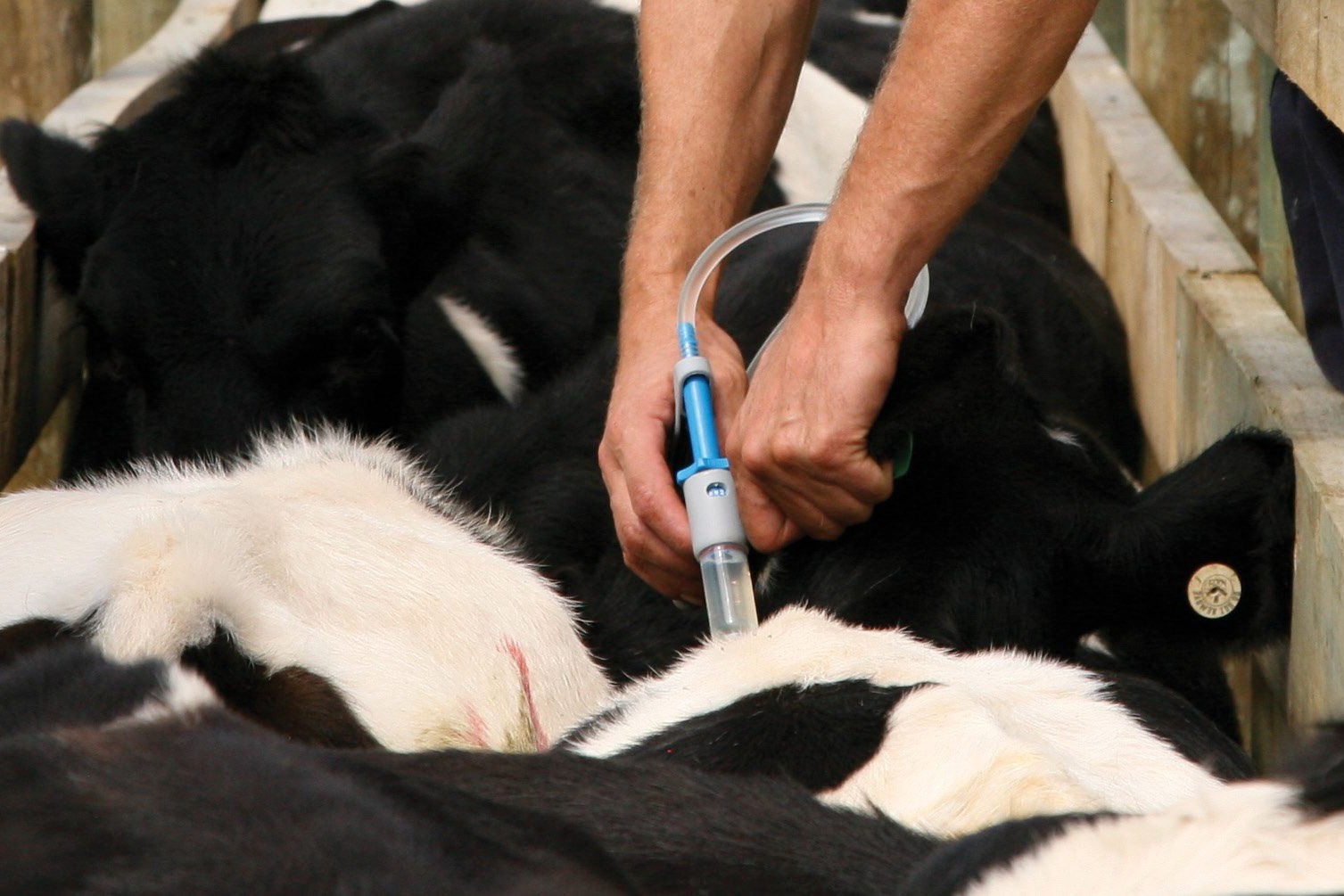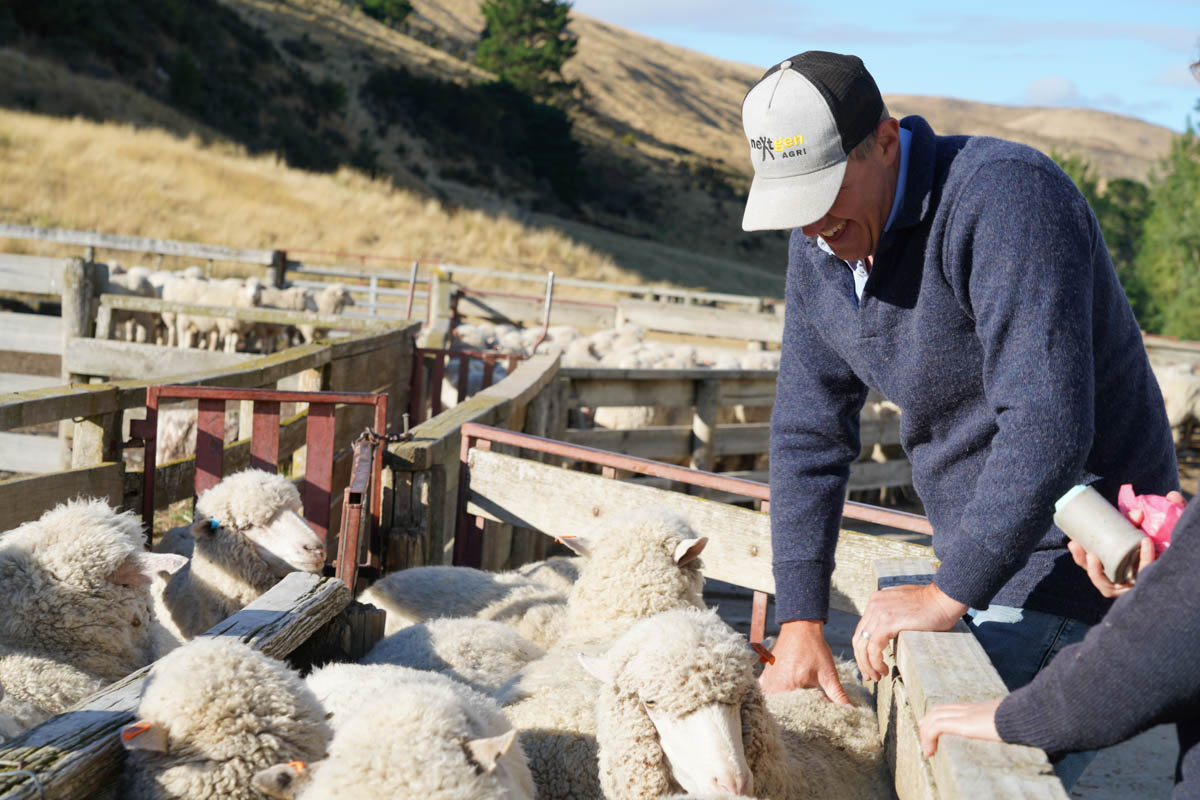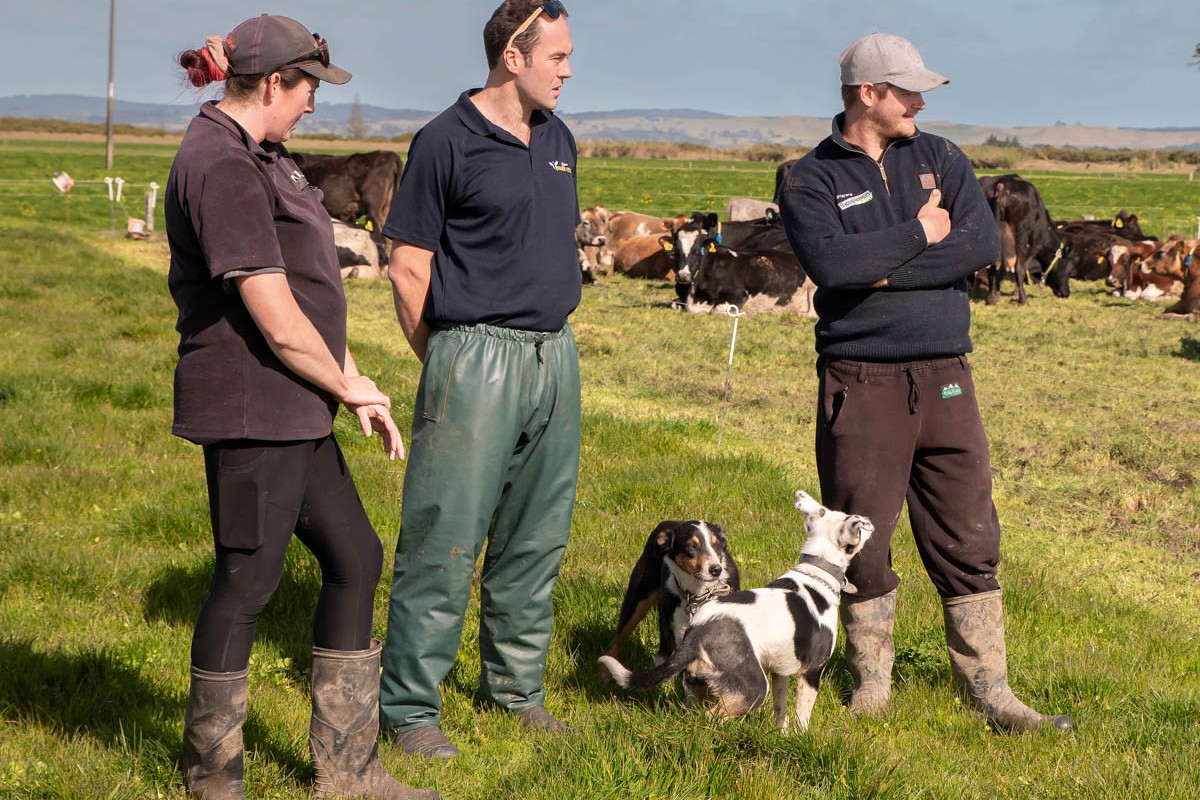Drench recipe no longer applies
On most sheep and beef breeding farms the risk of developing drench resistance comes more from actions behind the farm gate than from what’s coming through it, vet Ginny Dodunski writes.

On most sheep and beef breeding farms the risk of developing drench resistance comes more from actions behind the farm gate than from what’s coming through it, vet Ginny Dodunski writes.
The aim of quarantine drenching is to stop drench-resistant worms coming on to your farm in bought-in stock.
This presumes:
- That you know your own drench resistance status and don’t want it to deteriorate
- That the stock you’re buying in are carrying worms that have a worse resistance status than your own and you don’t want to import them.
Given the anecdotally high levels of combination resistance being diagnosed in sheep worms around the country and increasing reports of double- and triple-resistant cattle worms on intensive beef systems and heifer grazing properties, neither of the two above is a given.
Like so many things in worm management, recipes no longer apply. It pays to step back, take a look at your own situation and design a plan to suit.
Breeding systems
In breeding systems, preventing the introduction of resistant worms by appropriately treating incoming animals is technically correct. However, for most breeding systems, the number and type of stock introduced is such that the risk is extremely low. A handful of two-tooth rams and a couple of two-year-old bulls is the sum total for many breeding farms. On these farms, the risk of developing drench resistance comes more from actions behind the farm gate than from what’s coming through it.
Though for these systems the risk is real if ewe hoggets are returning from off-farm grazing, or (for cattle), a weaner bull finishing programme sits inside the breeding operation.
Breeder finishers who “top up” with trade lambs are also at risk from the lambs they buy, though it’s fairly typical for these farms to already have developed substantial combination resistance themselves. Such farms have an opportunity to source lambs from others with a better drench resistance status and import lambs without drenching them to introduce susceptible worms back on to their farms. It’s also an opportunity to re-assess farm policies, forage types and drenching management.
Finishing systems
In finishing systems there are several points of risk due to the nature of these operations. Introducing resistant worms in incoming stock is a big one.
Managing this risk can be difficult, especially when large numbers of animals are coming in. To deliver a ‘gold standard’ quarantine drench treatment, by holding animals off pasture for 24 hours and grazing them first on “contaminated” pasture, can create a substantial logistical problem.
That said, there are lamb finishers who have successfully implemented such a protocol and were, in hindsight, surprised it wasn’t as hard as they thought. Lambs will pick at good quality baleage while in yards. Water is the number one priority. Others have created quarantine paddocks that get used for the purpose once and then are sprayed out for cropping, or grazed only with cattle for many months.
protocol for dairy and dairy-beef weaners should not be difficult, as they are used to eating supplements (and should continue to be fed meal after arrival as part of good management). A 24-hour stand down in a yard with water, meal and silage available should not be difficult.
While it’s important to use a product that has a high chance of removing drug-resistant worms from new stock, just using a ‘gold standard’ product (or combination of products) can be ineffective if the quarantine procedure isn’t managed properly.
Stand-down time
The first consideration is how long to hold new arrivals off pastures. An effective quarantine drench will begin to kill adult worms and worm larvae in the gut within hours of being administered, and by 12 hours the bulk of them should be dead/ dying or at least unable to lay eggs.
Either way, there needs to be consideration at least of water and feed for stock while they are held in yards or a bare area (where larvae won’t develop or be consumed).
While a highly effective quarantine combination will kill the adult and immature worms in the gut fairly quickly, most drench chemicals are not ovicidal (don’t kill eggs). It may take much longer for the eggs already laid to pass out of the animal. So there will be a period (one to two days) where your highly effective drench has killed all the adults and larvae, but there are still resistant eggs passing out in the faeces. Hence the recommendation to hold animals in a yard or bare area where any resistant eggs that pass out after drenching are unable to complete their life cycle and be ingested by grazing stock.
Twenty-four hours is the standard recommendation as it’s a practical compromise – the majority of eggs should have passed out by the end of this period, and any remaining ones can be dealt with by dilution.
Dilution
It’s important in the first few days of grazing after a quarantine treatment to graze new arrivals on an area known to have reasonable worm contamination, to dilute out any eggs that are still passing out of the gut after the 24-hour stand down. Avoid new grass paddocks and other “clean” areas that you could populate with these resistant worms.
Product choice for sheep
In Australia, where multi-drug resistance has been common for longer than in NZ. WormBoss, the Aussie equivalent of Wormwise, recommends: “A combination of as many unrelated actives as possible, at least one of which should be one of the novel actives.”
In NZ, Wormwise recommends: “Following a strict quarantine procedure for all incoming stock and holding them off pasture for 24 hours. Avoid putting the new animals on to clean pasture. In sheep, quarantine treatments MUST involve the use of a product containing either monepantel or derquantel AND drenching with a combination of no less than four unrelated drench families, with at least one of these being the drench active monepantel or derquantel (however this may lead to extended meat withholding periods).”
Sounds like a nightmare? You can potentially avoid this by asking more questions. Ask to see the vendor’s latest faecal egg count reduction test results. (Get your animal health adviser to help you interpret them, they are rarely easy to read.) If the vendor has a better resistance status than you do, you may be able to avoid a quarantine protocol altogether.
Product choice for calves
There are increasing reports from around the country of double- and triple-drench resistance being diagnosed on intensive dairy beef and heifer rearing properties.
This may mean in some cases that a traditional quarantine treatment (often “anything goes”) for young calves is no longer appropriate.
A complicating factor for calves under 120kg liveweight is that many products containing abamectin are not licensed for use in these smaller animals. Products may be used off-label, but care must be taken to dose animals accurately to their actual liveweight. Overdosing with abamectin has been a common cause of calf deaths for many years.
Zolvix Plus is registered for use in cattle, and an increasing number of farmers buying in young dairy beef animals are using this as their quarantine treatment. Seek advice from your animal health adviser before doing this.
- Ginny Dodunski is a veterinarian and Wormwise programme manager.




